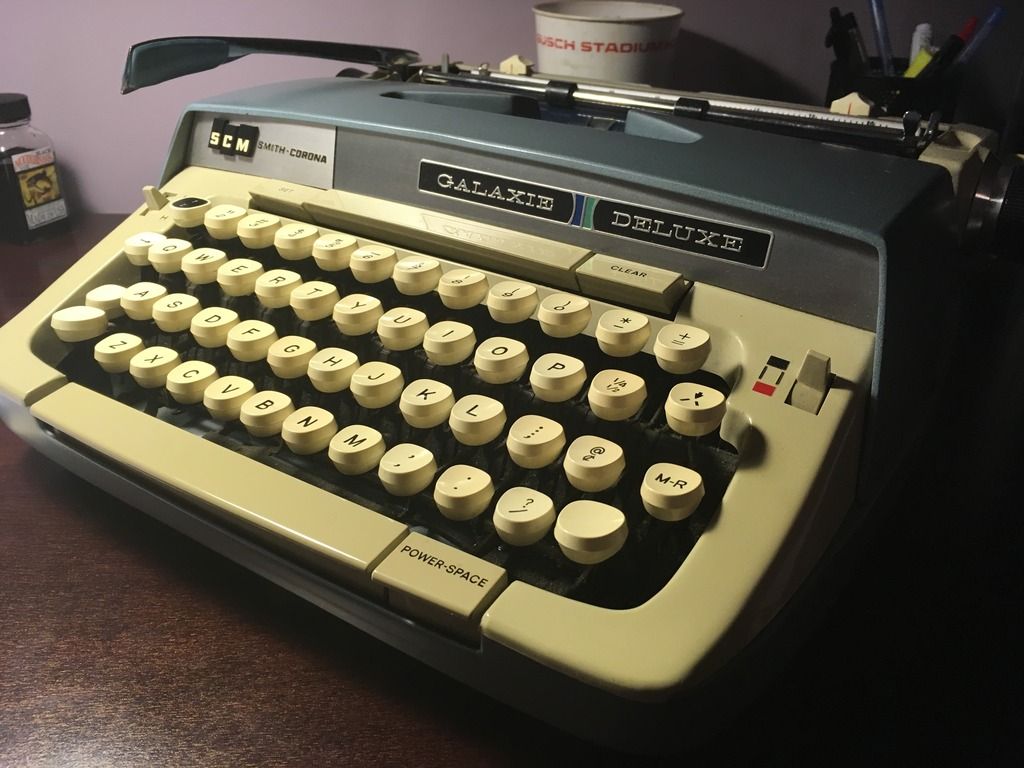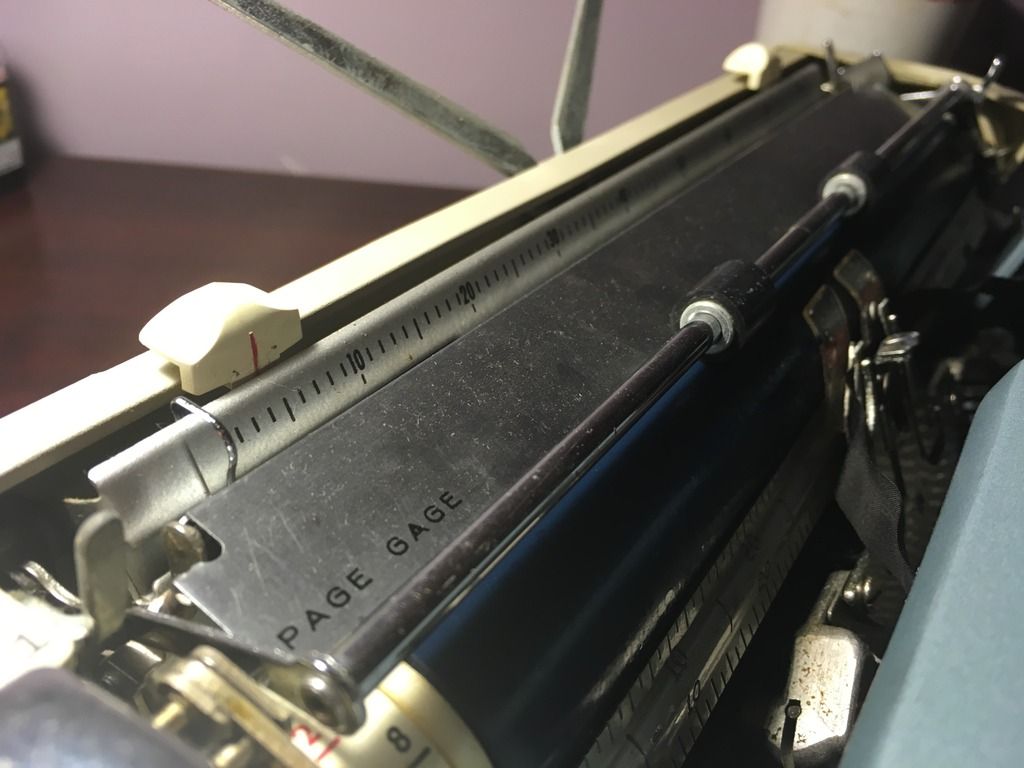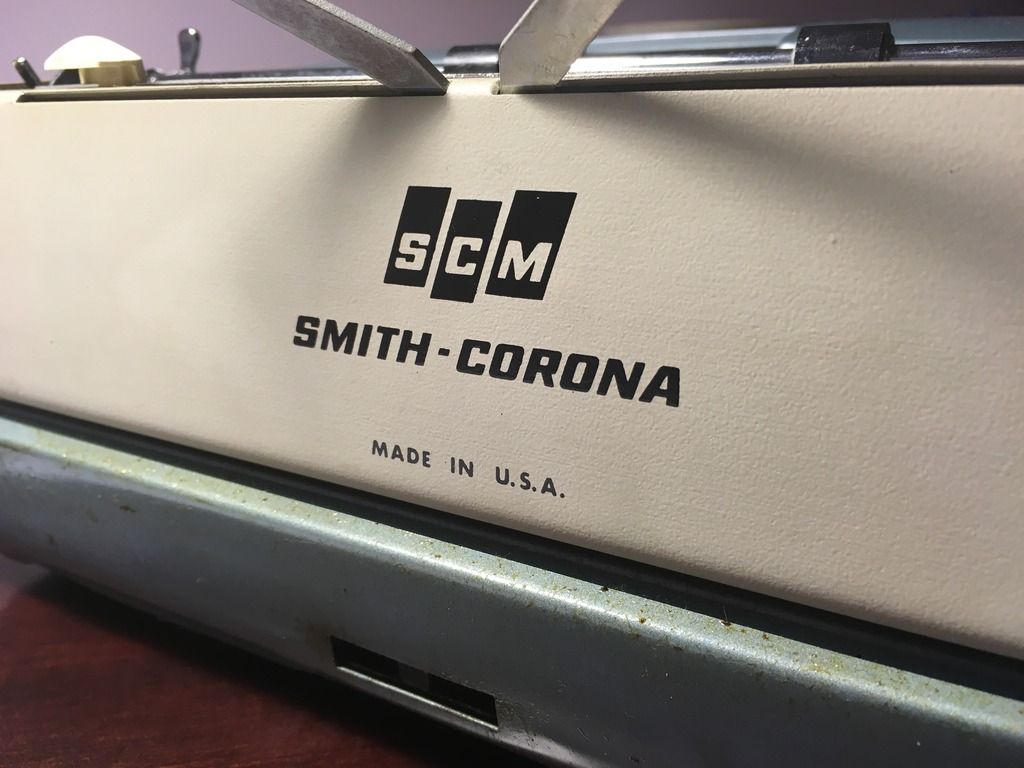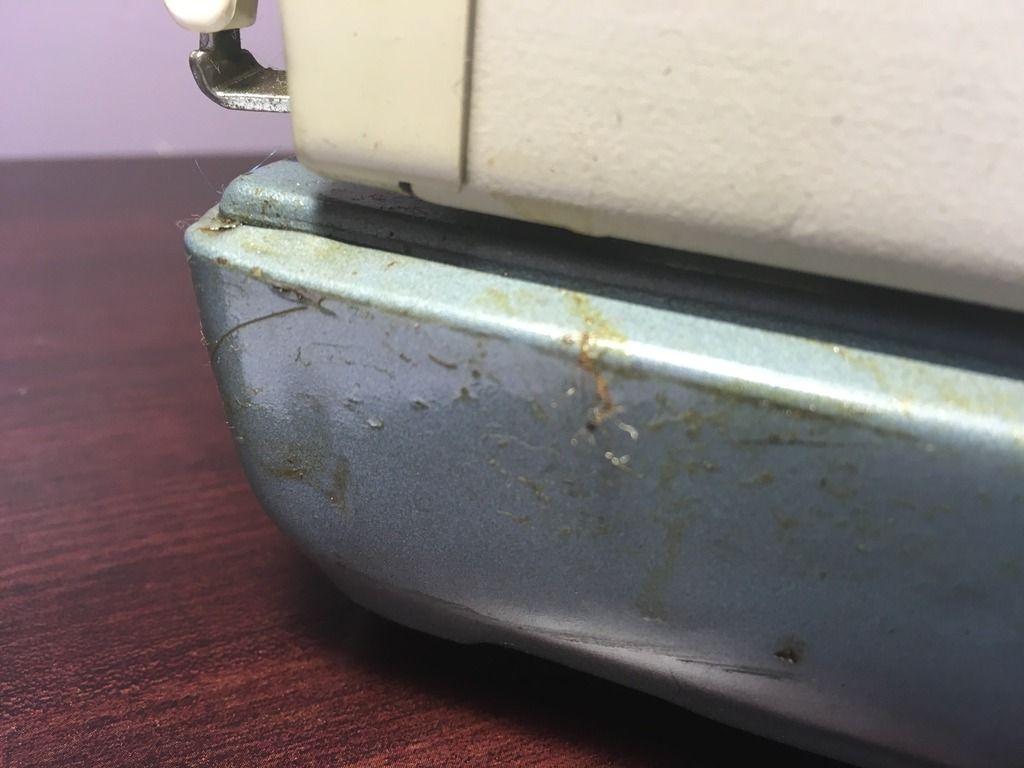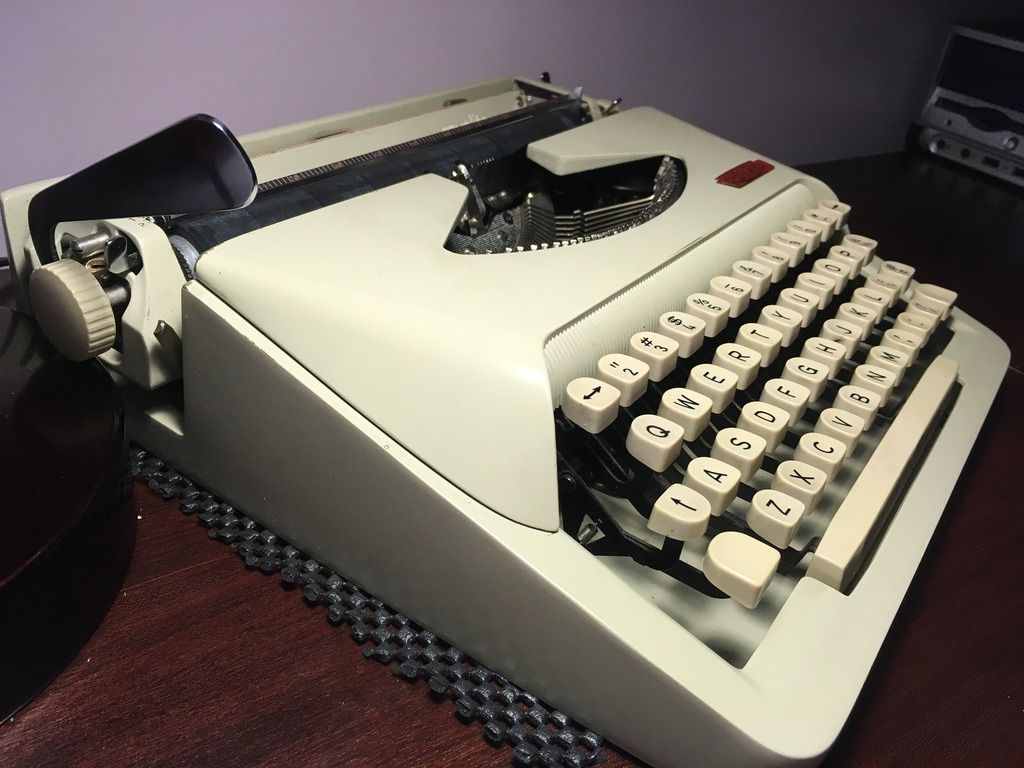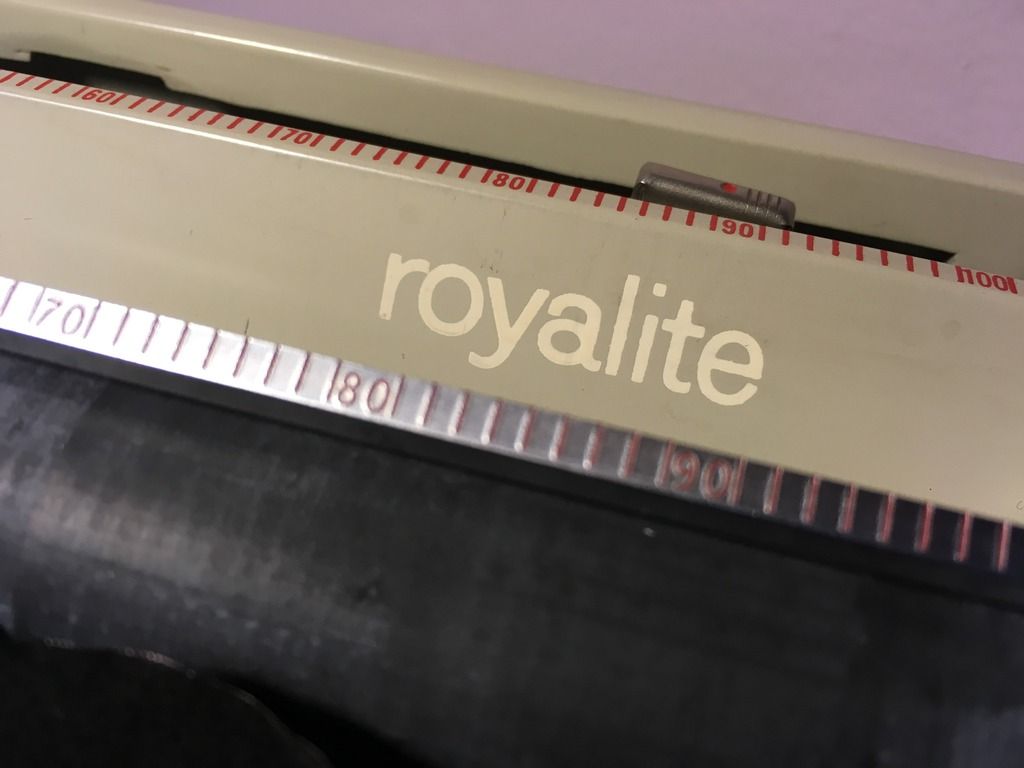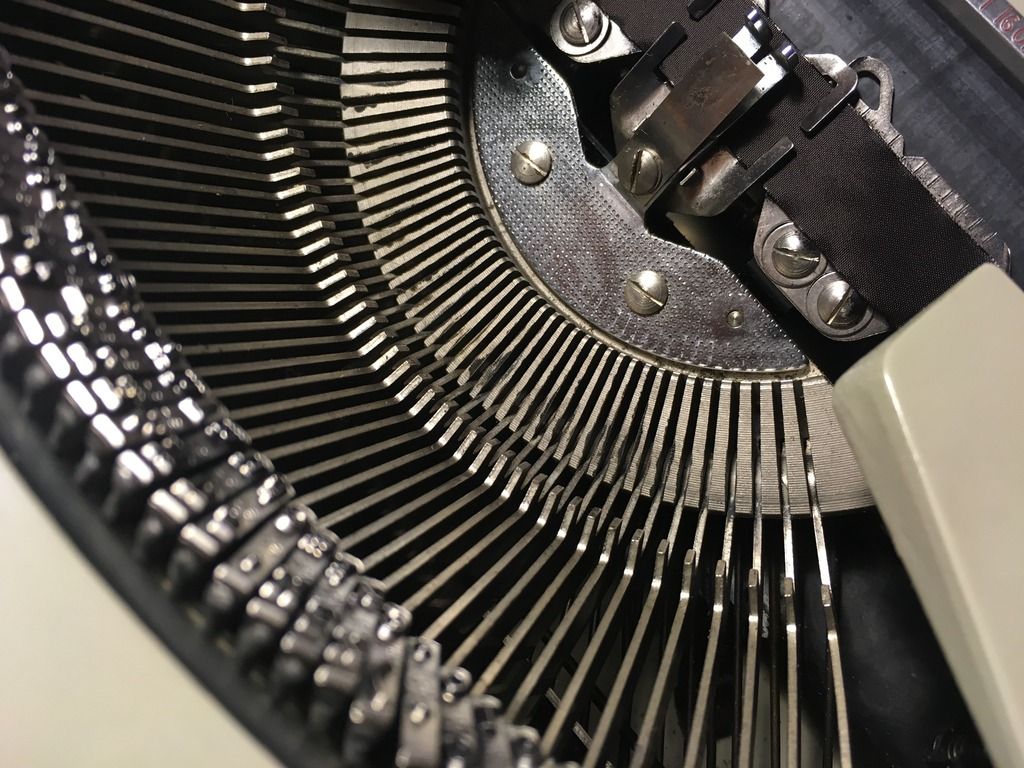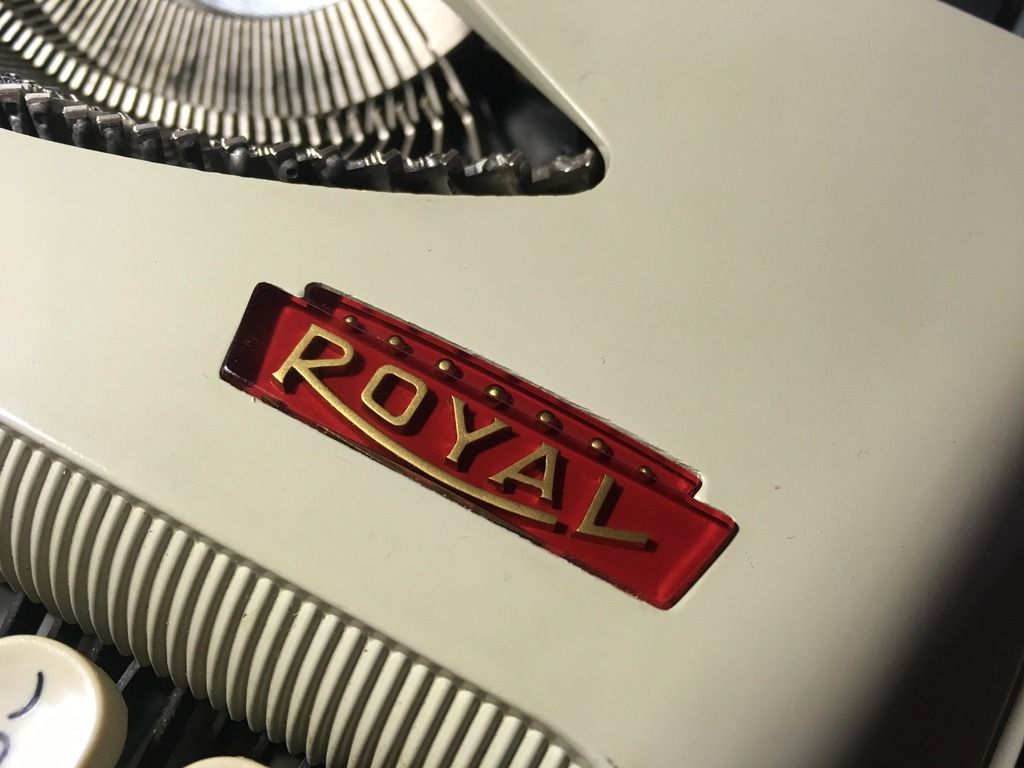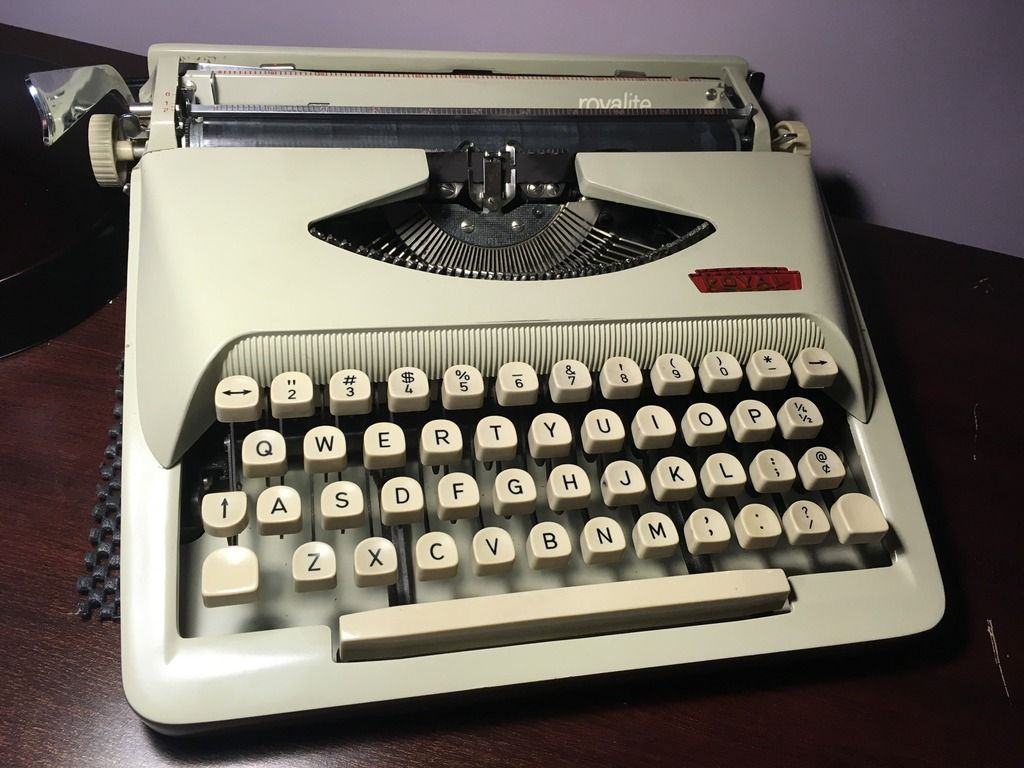- TypewriterKing
- Inactive Account
 Offline
Offline - From: DeepInTheHeartO', Texas
- Registered: 17-2-2016
- Posts: 1,011
Re: Recent Acquisitions Thread
Carriage envy?
Underwood--Speeds the World's Bidness
- Myshkin
- New Member
 Offline
Offline - From: St. Louis, MO, United States
- Registered: 03-10-2016
- Posts: 12
Re: Recent Acquisitions Thread
- tojeem
- Platen Punisher
 Offline
Offline - Registered: 08-7-2015
- Posts: 81
Re: Recent Acquisitions Thread
Lovely! Thanks for sharing.
- RWWGreene
- Platen Punisher
 Offline
Offline 
- From: New Hampshire, USA
- Registered: 14-11-2013
- Posts: 86
Re: Recent Acquisitions Thread
Pretty! I have one of those in blue and gray, but the badge got pushed in and lost to time. It's not a bad little typer.
- Fleetwing
- Typewriter Talk Vet
 Offline
Offline - From: Hartford, CT USA
- Registered: 30-6-2015
- Posts: 1,022
Re: Recent Acquisitions Thread
New (to me) SM8 -- no. 3238370, which I think makes it from 1967. I was curious about this model; I knew it was stripped down from the SM9, but what are the differences? To begin, tabs are set a la SM3 -- only six of them, which you move manually. No touch adjustment. Paper support is very basic -- doesn't extend. No tab brake. I think that's it.
These economies are all perfectly fine with me: The touch on this machine feels just about right as it is. Many of us only use the tab function rarely; having the simplified mechanism is one significant fewer thing to have to deal with if not working right (and I think many of us don't use the tab often, or actually remove/deactuate it). I have several SM9s, and I don't think the tab brake works right on any of them. No full tab mechanism, and no tab brake, also means the machine is lighter -- a good thing.
The machine itself is in great shape; everything works fine. Some rust on some of the springs, and the case hinge and spring-loaded hold-downs inside the case were almost seized with rust, a sign of dampish storage. For some reason the previous owner had spray painted the case to be a uniform gray, but the case itself is in fine shape.
The typeface is the Pica No. 97 I think; I like it better than the "modern" Pica on several of my SM9s.
I think I will like this typewriter very much! It might be a "sleeper" in the Olympia line. According to the 1966 Olympia catalog, the SM8 (they write it "SM-8") cost $99.50 list. The SM9 was $20 more, not that large a price difference. So I imagine they sold comparative few of the SM8s. (I paid $30 for mine; maybe a little more than I'd have liked, but the guy on Craigslist started at $50 back in May and finally came down to within my acceptable range. Sometimes it pays off to be patient.)
Others' thoughts on this model?
- Uwe
- Moderator
 Offline
Offline 
- From: Toronto, Canada
- Registered: 12-3-2013
- Posts: 4,410
Re: Recent Acquisitions Thread
I look at the late SM models from the opposite perspective where the SM8 is the base machine rather than a "stripped down" version of the SM9, which really is a De Luxe (it was badged that way for a while). And don't forget the Monica, which is the true budget version, so in terms of features from least to most: Monica >> SM8 >> SM9.
Of note, $20 in 1966 was not insignificant. According to the inflation calculator that would be the equivalent of $149 today, enough of a price jump that I think most average buyers would pause and consider if they really needed the De Luxe model. Despite this I think you're right that the SM8 sold in fewer numbers; most of the late model SMs that I come across are 9s and very few 8s. There are certainly more Monica models available in my area, so it looks to be a case of people opting for one extreme or the other, which makes sense and might explain why there don't seem to be as many SM8s: If you need a tabulator then why not buy the machine that has an easier and more flexible one to use, and if you don't have use for one, why pay for that feature at all?
The pronoun I has always been capitalized in the English language for more than 700 years.
- •
- Fleetwing
- Typewriter Talk Vet
 Offline
Offline - From: Hartford, CT USA
- Registered: 30-6-2015
- Posts: 1,022
Re: Recent Acquisitions Thread
I've never encountered a Monica. Similar build quality, or can you tell a "built down to a price point" difference? (And who was Monica, anyway? ![]() )
)
- thetypewriterman
- Key Master
 Offline
Offline - From: Leiston, England
- Registered: 29-5-2013
- Posts: 942
Re: Recent Acquisitions Thread
The Monica of the 1960's was an SM8 without a tabulator - but certainly not built down to a price. The basic mechanism - all the important bits - are the same whether the machine is a Monica, SM8 or SM9. If you didn't need a tabulator, it was probably something of a bargain. Olympia build quality at a budget price. The very last Monicas (after the SM8 and 9 were discontinued and were assembled in Olympia's former adding machine factory in Ireland) had plastic cases, and lots of plastic bits inside. They also half-heartedly made a 'plastic' Monica with a tabulator. But even cheapened like that, the Monica was still head and shoulders above other manufacturers' offerings in the 1980's. Err... can you tell that I like Olympias ?![]()
- Myshkin
- New Member
 Offline
Offline - From: St. Louis, MO, United States
- Registered: 03-10-2016
- Posts: 12
Re: Recent Acquisitions Thread
Another estate auction, another find. I had to wrestle a little girl to the ground after about five minutes of watching her do her best to damage the platen and type hammers, but it was totally worth it. I'm kidding, no children were harmed in my acquisition of this machine, but I was on the verge of screaming at the little brat before I finally asked her father, whose nose had been buried in his phone for at least ten minutes, if I could take a look at the machine.
This one didn't come quite as cheaply as the Royalite. It cost me $7 to make it mine. Still, not a bad deal. I know it's a pretty common machine, but after taking it for a test type I'm really excited about using this thing. It was a pleasure to type on. Pictures were taken immediately after getting it home. A deep cleaning is in store for tomorrow evening. This thing is capital-G Greasy. The one close-up shot of the back is just to show the grease. If the platen looks shiny in the photos, yeah, that's grease, too. I used two sheets of paper during the test type and the one that touched the platen came out with grease spots on it. I've never seen that before. Please share any interesting tidbits or anecdotes about this machine if you have them. I'd love to hear anything at all.